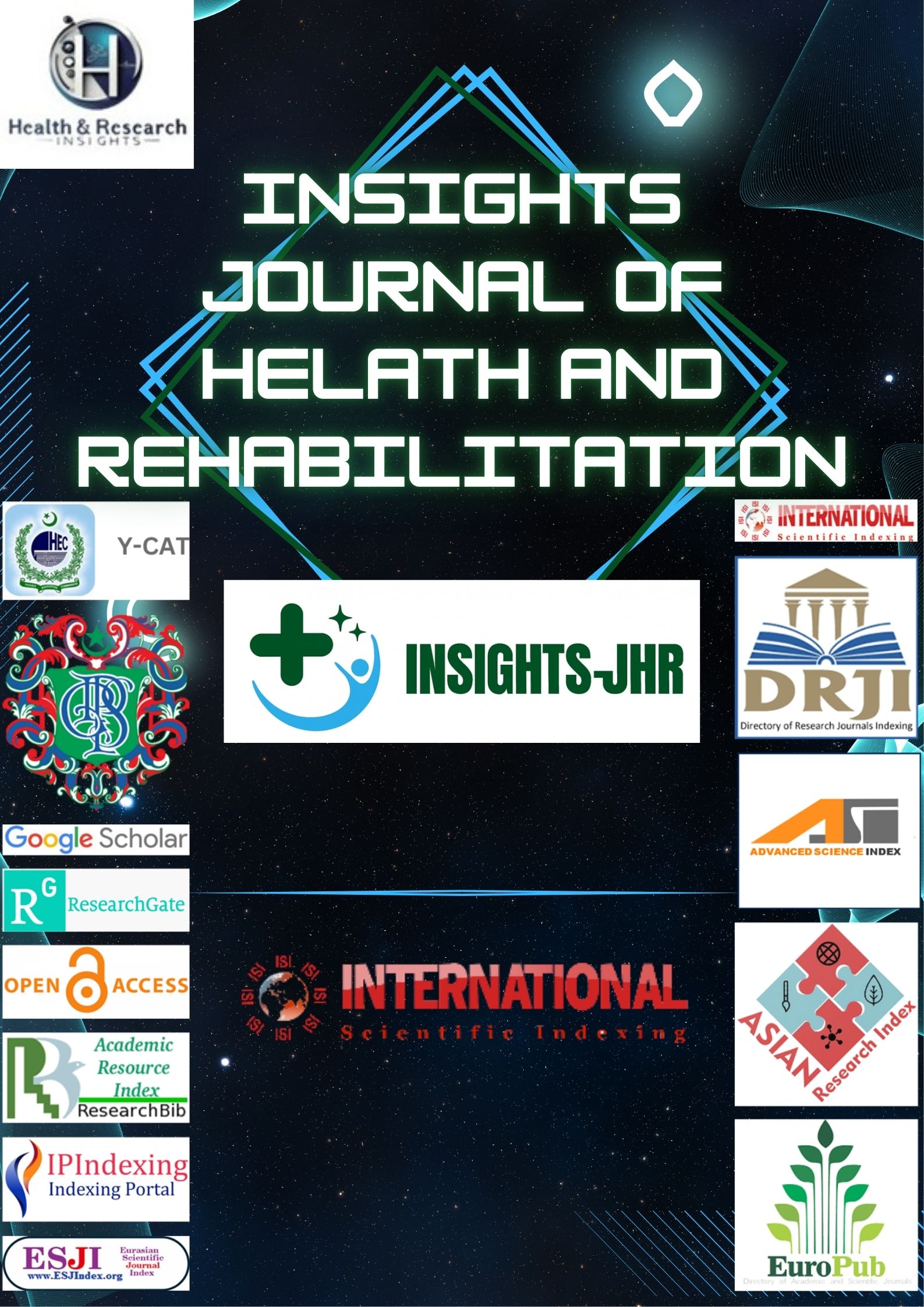CANCER AS EVIDENCE: FORENSIC IMPLICATIONS IN DISEASE AND DEATH; A NARRATIVE REVIEW
DOI:
https://doi.org/10.71000/pxpnc804Keywords:
Forensic oncology, toxicogenomics, , molecular autopsy, Cancer-Associated Thrombosis, Postmortem Diagnostics, Digital Pathology.Abstract
Background: Cancer, while long considered a clinical concern, is increasingly recognized for its forensic relevance. Beyond its pathological manifestations, malignancy can complicate cause-of-death investigations and carry implications for legal accountability. Its ability to mimic trauma, induce fatal thrombotic events, or result from environmental and occupational exposures positions cancer as a critical but underexplored element in forensic science.
Objective: This narrative review aims to explore the intersection of oncology and forensic medicine, emphasizing the diagnostic, medico-legal, and evidentiary roles that cancer can play in death investigations. The review synthesizes recent advancements in molecular diagnostics and highlights their application in forensic pathology.
Main Discussion Points: The review discusses how cancer can be a primary, contributory, or incidental cause of death, and how its presentation may mimic trauma or natural diseases. It explores the forensic implications of cancer-associated thrombosis, toxicological exposures, and occupational carcinogens. Advanced molecular techniques such as next-generation sequencing (NGS), epigenetic profiling, liquid biopsy, digital pathology, and molecular autopsy are examined for their potential in clarifying cause and manner of death in complex cases. Ethical, legal, and genetic considerations, especially concerning hereditary cancer syndromes, are also addressed.
Conclusion: Cancer is both a pathological condition and a potential source of forensic evidence. Its integration into forensic investigations, supported by molecular and imaging technologies, enhances the accuracy of death certification and medico-legal accountability. Further research and standardized guidelines are needed to solidify forensic oncology as a core component of modern death investigation.
References
Saini, A., et al., Cancer causes and treatments. Int J Pharm Sci Res, 2020. 11(7): p. 3121-3134.
DiMaio, V.J. and D.K. Molina, DiMaio's forensic pathology. 2021: CRC press.
Jones, I., Objects of crime: Bodies, embodiment and forensic pathology. Social & Legal Studies, 2020. 29(5): p. 679-698.
Samuels, S.W., et al., Ethical thinking in occupational and environmental medicine: Commentaries from the Selikoff Fund for Occupational and Environmental Cancer Research. American journal of industrial medicine, 2022. 65(4): p. 286-320.
Balaji, D., et al., Recent Advances in Forensic Toxicology. Medical Science: Recent Advances and Applications Vol. 4, 2025: p. 119-132.
Panga, S.K., et al., Recent Advances in Forensic Medicine: An Overview. Medical Science: Recent Advances and Applications, 2025: p. 145.
Rohtash, R.D., Molecular Pathology in Cancer: Targeting Biomarkers for Early Diagnosis and Personalized Treatment. Scholar's Digest: Journal of Pathology, 2025. 1(1): p. 1-19.
Fan, Y., et al., Underlying causes and co-existence of malnutrition and infections: an exceedingly common death risk in cancer. Frontiers in Nutrition, 2022. 9: p. 814095.
Sane, M.R., N. Kapoor, and A. Badiye, Introduction to Forensic Medicine and Pathology, in Textbook of Forensic Science. 2023, Springer. p. 603-619.
Spitz, W.U. and F.J. Diaz, Spitz and Fisher's medicolegal investigation of death: guidelines for the application of pathology to crime investigation. 2020: Charles C Thomas Publisher.
de Boer, H.H. and J. Fronczek, Death from Natural Causes, in Forensic and Legal Medicine. 2023, CRC Press. p. 193-198.
Vignau, A. and C. Milikowski, The autopsy is not dead: ongoing relevance of the autopsy. Autopsy and Case Reports, 2023. 13: p. e2023425.
Hassan, N., et al., The tissue factor pathway in cancer: overview and role of heparan sulfate proteoglycans. Cancers, 2023. 15(5): p. 1524.
Dettmeyer, R.B., Forensic histopathology: fundamentals and perspectives. 2018: Springer.
Daguenet, E., et al., Venous thromboembolism and radiation therapy: The final radiation‐induced thrombosis study analysis. Cancer Medicine, 2022. 11(8): p. 1753-1762.
Ozdemir, M., et al., The forensic medical evaluation of medical malpractice claims in the field of medical pathology. Forensic Science, Medicine and Pathology, 2025: p. 1-9.
Agboola, O.O., et al., Occurrence of Carcinogens and their Potential Effects on Human Health–A Review. Umyu Scientifica, 2024. 3(1): p. 129-143.
Applegate, K., et al., Individual response of humans to ionising radiation: governing factors and importance for radiological protection. Radiation and Environmental Biophysics, 2020. 59(2): p. 185-209.
Saad-Hussein, A. and H.K.-A. Ramadan, Impacts of climate change on environmental toxins and pollutants causing liver health problems, in Impact of Climate Change on Health in Africa: A Focus on Liver and Gastrointestinal Tract. 2023, Springer. p. 53-78.
Rana, A.K., Challenging biological samples and strategies for DNA extraction. Journal of Investigative Medicine, 2025. 73(6): p. 443-459.
Martínez-Barrios, E., et al., Molecular autopsy: Twenty years of post-mortem diagnosis in sudden cardiac death. Frontiers in medicine, 2023. 10: p. 1118585.
Gerra, M.C., C. Dallabona, and R. Cecchi, Epigenetic analyses in forensic medicine: future and challenges. International journal of legal medicine, 2024. 138(3): p. 701-719.
Kaur, V., M. Reddy, and O. Khan, Medicolegal Issues in Bariatric Surgery, in Obesity, Bariatric and Metabolic Surgery: A Comprehensive Guide. 2023, Springer. p. 1161-1174.
Lam, C.M., Revisiting Loss of Chance in Medical Negligence: Employing Public Policy Positively as Justification. in Journal of Professional Negligence, 2020. 36(3): p. 104-132.
Vanderley-Reichner, C., Patient examination consent for all imaging procedures: a shared vision. J Med Radiat Sci, 2021. 68: p. 3-79.
Wan, L., et al., The approach of virtual autopsy (VIRTOPSY) by postmortem multi-slice computed tomography (PMCT) in China for forensic pathology. Forensic Imaging, 2020. 20: p. 200361.
Saha, S., Y. Araf, and S.K. Promon, Circulating tumor DNA in cancer diagnosis, monitoring, and prognosis. Journal of the Egyptian National Cancer Institute, 2022. 34(1): p. 8.
Downloads
Published
Issue
Section
License
Copyright (c) 2025 Raza Ullah, Muskan, Sania Baloch, Farwah Siddiqi, Dolat Ram, Salman Ahmed, Iqra Solangi, Ishrat Bibi (Author)

This work is licensed under a Creative Commons Attribution-NonCommercial-NoDerivatives 4.0 International License.







